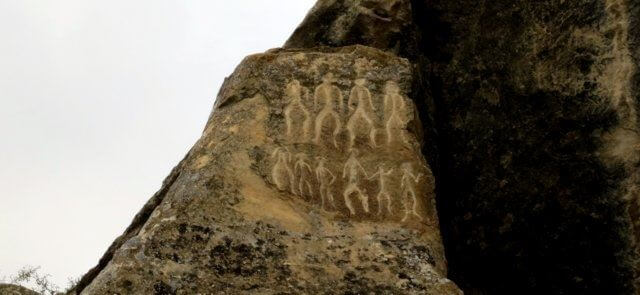
The iconic image of the Gobustan Rock Carvings
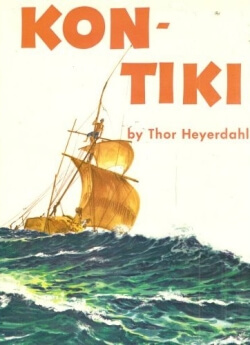
Kon-Tiki by Thor Heyerdahl
Growing up, one of the books on our shelves was Kon-Tiki, the tale of Thor Heyerdahl’s crossing of the Pacific ocean on a wooden raft, in the style of the Polynesian islanders.
The Norwegian scholar and explorer was always a bit of a travel hero of mine, so I was surprised to find that he was a regular visitor to Azerbaijan, and Gobustan in particular.
I’d travelled through here six years ago, and whilst we stopped at the Gobustan rock carvings, we didn’t have a guide or book, so the meaning was somewhat lost on us, beyond knowing they dated back to 10,000BC.
This time we had a proper guide from the Ministry of Tourism who explained where the best carvings were, and their significance.
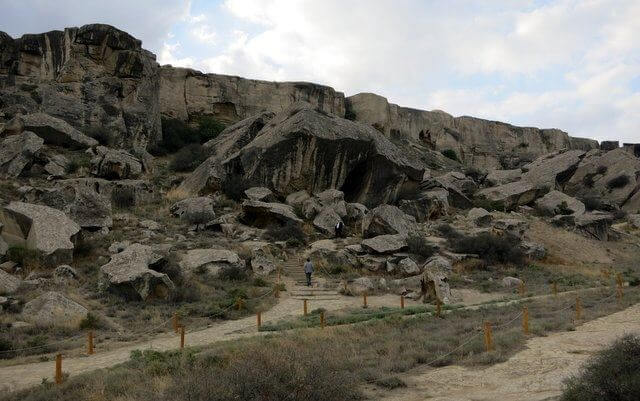
Gobustan Quarry
Discovery
The petroglyphs at Gobustan were nearly destroyed before they were discovered. In the 1930s the area was being turned into a quarry, when one of the workers noticed the strange carvings on the rocks. Further investigation revealed more carvings and paintings in what appeared to be man-made caves.
Over the next 25 years teams identified 3,500 paintings spread over 750 rocks.
The drawings depict stick figures hunting and dancing. Images of goats, deer and cattle are clearly discernible (at least after someone points them out). There are pictures of the clothing that people wore, and the reed boats they used to sail on the Caspian Sea.
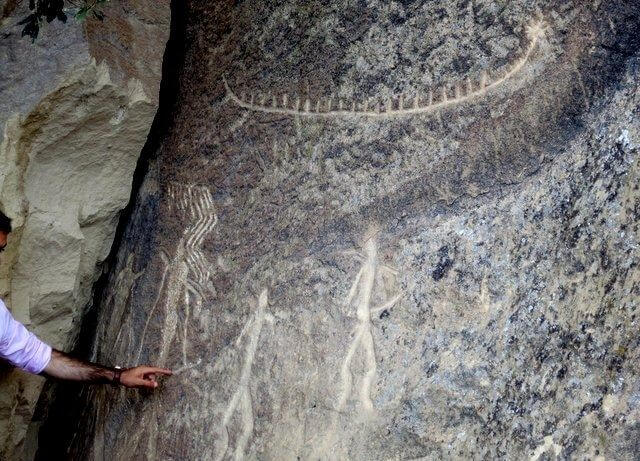
It’s not known whether the uprights on the boat represent oars, or the crew.
Thor Heyerdahl
It was these pictures of sickle-shaped reed boats that first piqued the interest of Thor Heyerdahl, as they were similar to drawings found in Scandinavia. From the position of the sun in the drawings he surmised that the people here travelled north, and that Scandinavians actually originated from the area now known as Azerbaijan.
This is where the facts stopped getting in the way of a good story. Heyerdahl theorised that Azerbaijan was home to an advanced ancient civilisation. These people created folding boats and travelled north on both waterways and pack animals.
He hinged all these theories on notes by a 13th century mythographer in the Ynglinga Saga who writes that the god Odin came to the North from a country called Aser.
Aser, or Æsir as Heyerdahl interpreted it, was east of the Caucus Mountains and the Black Sea, so must be Azerbaijan.
Despite all his earlier successes, this last project, entitled ‘The Search for Odin’ generated harsh criticism and accusation of pseudo-science from fellow historians in Norway. They highlighted his selective use of sources and showed that most of his findings were pure coincidence.
Still, as with much of his earlier work, Heyerdahl wasn’t really aiming for scientific acceptance and made his money selling popular science books.
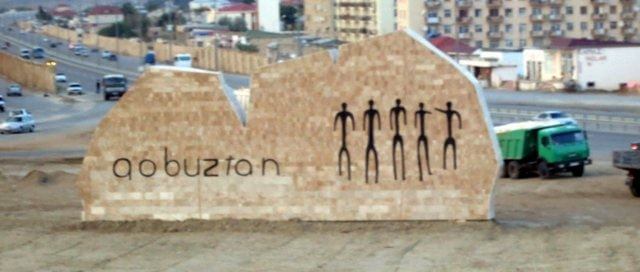
Are we there yet?
Gobustan Visitor Tips
Go soon, as Heyerdahl’s interest raised the profile of the carvings, and increased the visitor numbers. Given their historical significance, and the continued erosion and vandalism, it wouldn’t surprise me if they’re locked away sometime soon. Beyond the recent graffiti, there are additions by Persian visitors in the 7th century and Roman soldiers from the 12th century.
Gobustan is about 60km southwest of Baku. There’s only one road in that direction along the coast, and you’re greeted by a huge rock emblazoned with ‘Qobuztan’, so you can’t really miss the entrance.
On the way there, look out for the luxurious new homes being built along the beach, a stone’s throw from derelict Soviet style factories are worker housing.
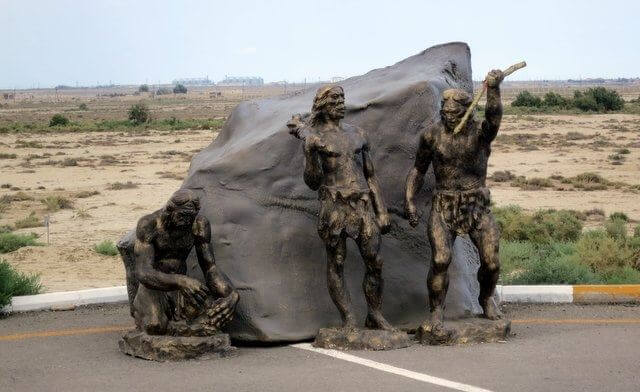
The welcoming committee. Elsewhere in the park the staff are very friendly.
This trip was arranged by the Azerbaijan Tourist Board, as part of the United Nations World Tourism Organisation Silk Road Project.
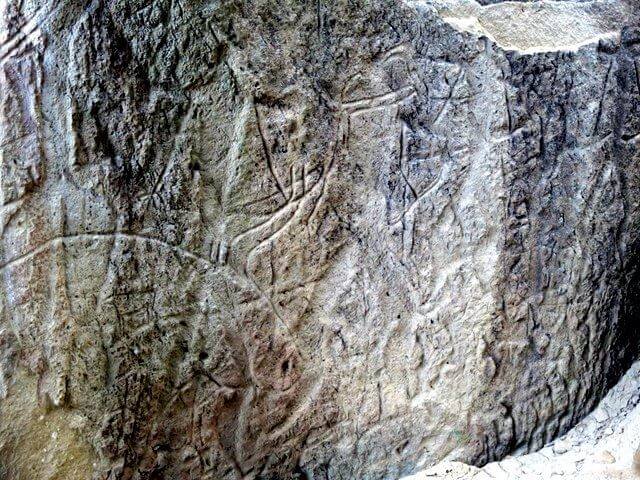






Pingback: Steve Juba (@solotravelclubs)
Pingback: Lisa Niver Rajna (@wesaidgotravel)
Pingback: Gear Up and Play (@gearupandplay)
Pingback: Steve Whitty (@stevo120665)
Pingback: Dr. Jessica Voigts (@WanderingEds)
Pingback: Maria (@acceleratedstal)
Wow! Got the imagination flowing – great post